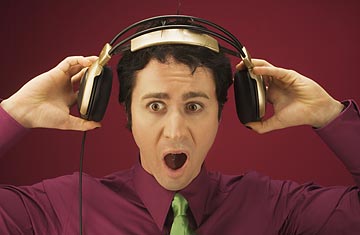
The European Union released a set of guidelines for manufacturers on Sept. 29 that will lower the default maximum-volume level on iPods and other portable music devices within the next two years. For some, this is nothing new — France already caps the decibel level on portable music players sold in the country at 100. But some devices are able to play as high as 120 decibels — a noise level equivalent to that generated by an airplane takeoff. So why is the E.U., like your nosy next-door neighbor, trying to force you turn down that racket?
Science agrees that listening to music at too high a volume can be dangerous, even for the young. Dr. Sandra Levey of New York City's Lehman College says 13% of teenagers aged 16 to 19 already show signs of noise-induced hearing loss. The inner ear contains small hair cells that vibrate against an inner membrane, generating an electrical signal that the brain interprets as sound, Levey explains. When bombarded by loud volumes over an extended period of time, these hair cells die off. The result is hearing loss, and potentially an array of other nasty consequences. A study conducted by Levey and Dr. Brian Fligor of Harvard University, which is nearing completion, suggests teens with hearing loss are at risk for reduced vocabularies, reading and math skills.
So what's a safe level to listen at? Dr. Alison Grimes, manager of the audiology clinic at Ronald Reagan UCLA Medical Center in Los Angeles, says it's difficult to tell. Eighty decibels is about the same level as ambient street noise, and existing U.S. government guidelines for workplace noise levels generally consider it a safe level for extended exposure. But Grimes says some people's ears are more susceptible to damage than others, which makes it hard to set definitive standards. In general, the softer the volume — and the shorter the duration — the lower the risk of hearing loss.
The E.U. will only mandate a default maximum-volume level — users are still able to go in and tweak the settings to rock out as loud as they want. Because of this, both Levey and Grimes say the more effective approach to the issue may be educating listeners about the problems that can arise. As president of the American Academy of Audiology, Grimes helped start an initiative called Turn It to the Left, which was aimed at informing people about the dangers of prolonged exposures to loud noise. And Levey says that during her study, talking to people about the risks was often the most effective measure. The E.U. mandate does force manufacturers to include a warning with their audio players, although what form it will take remains unclear.
